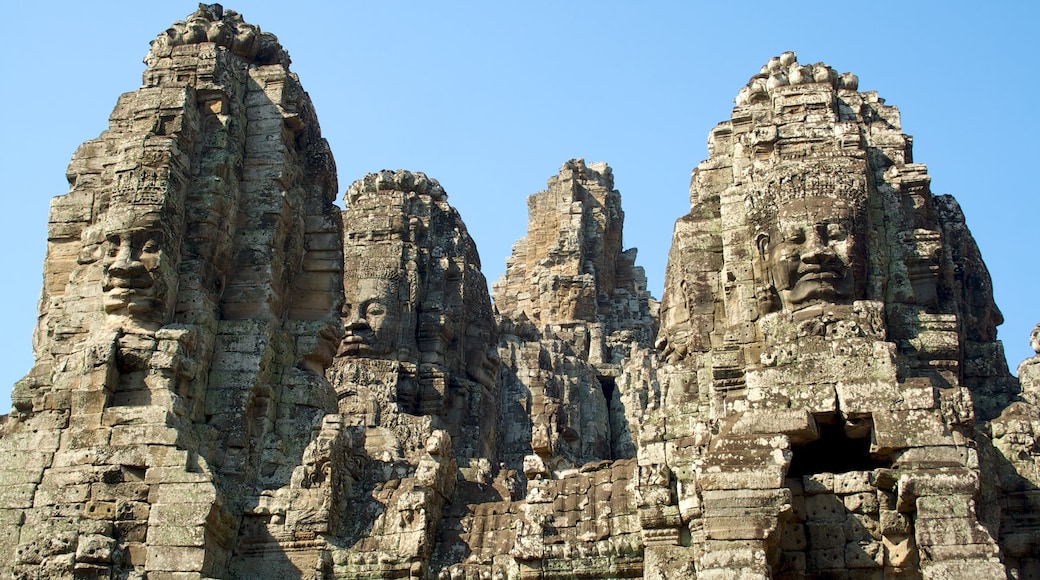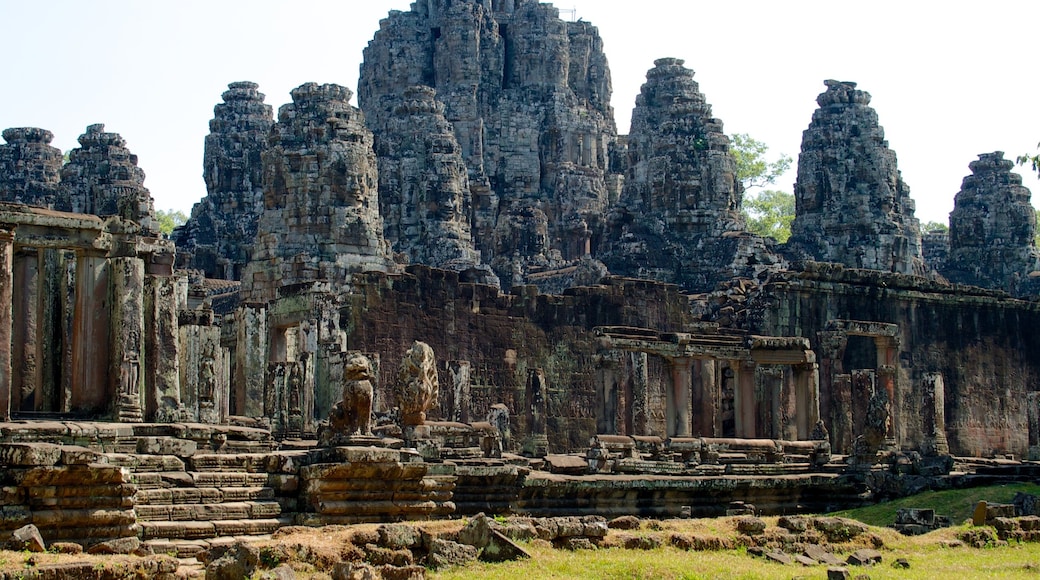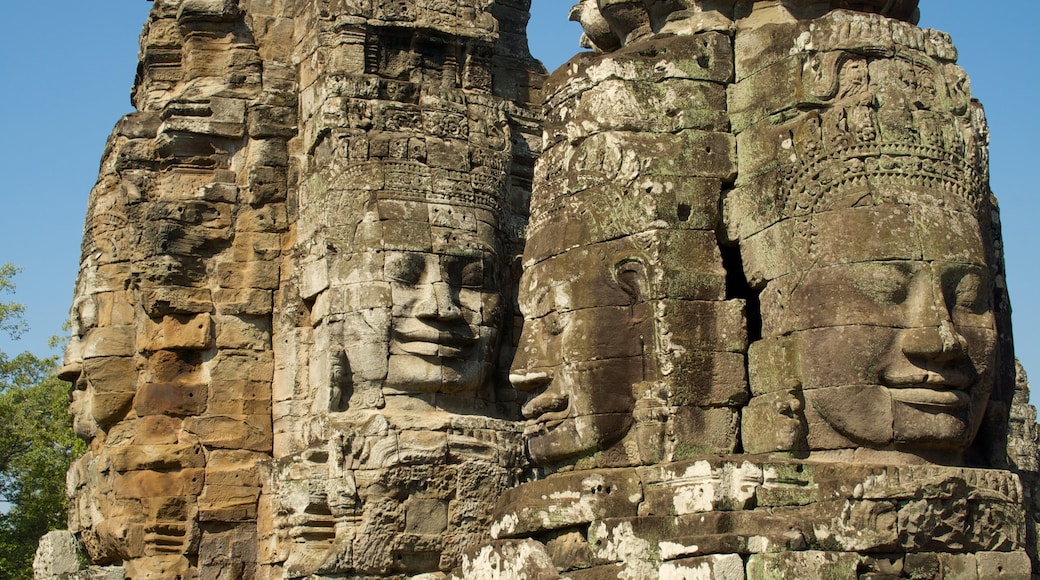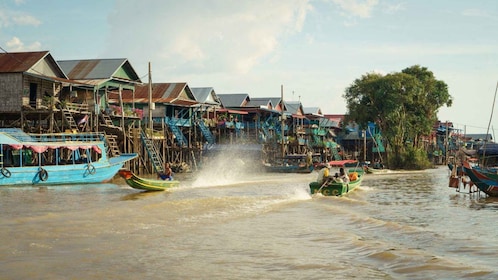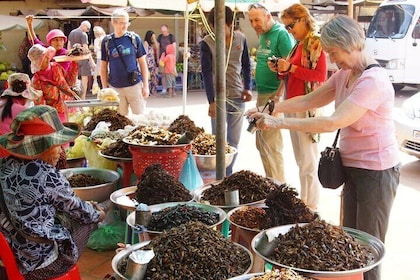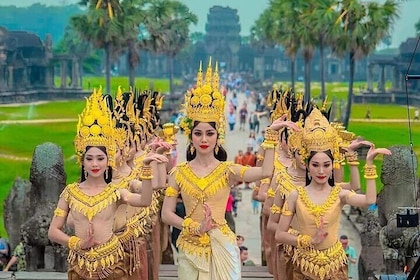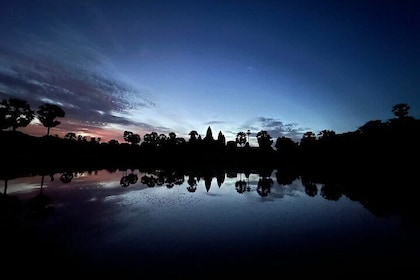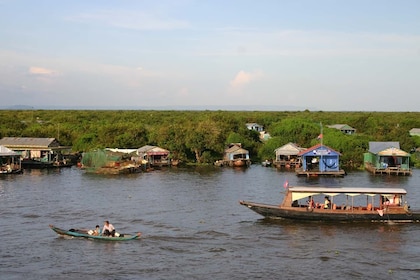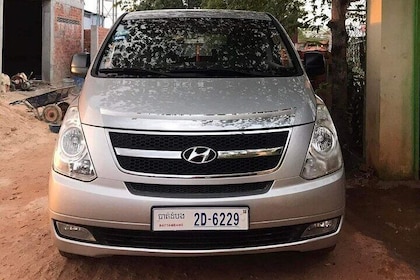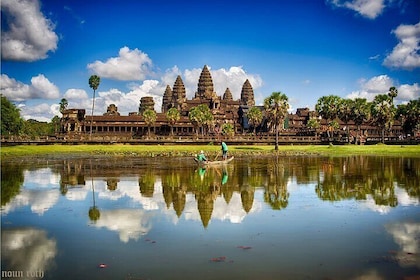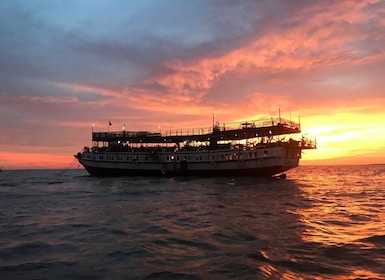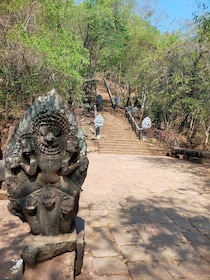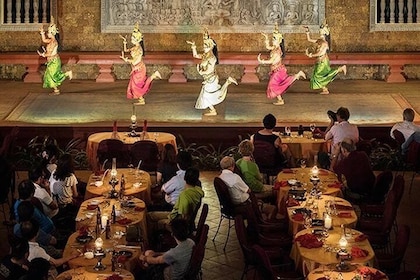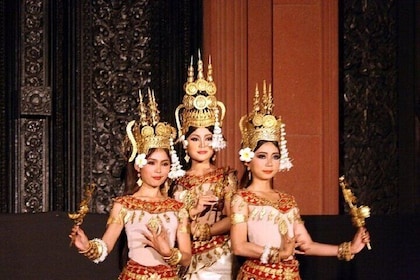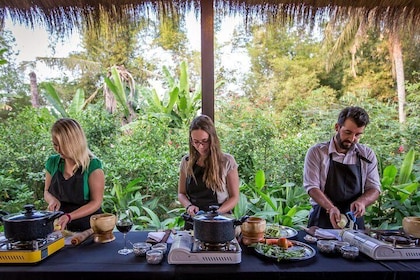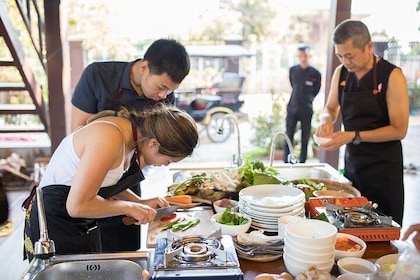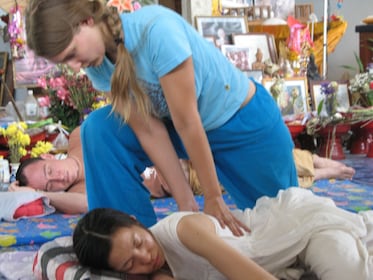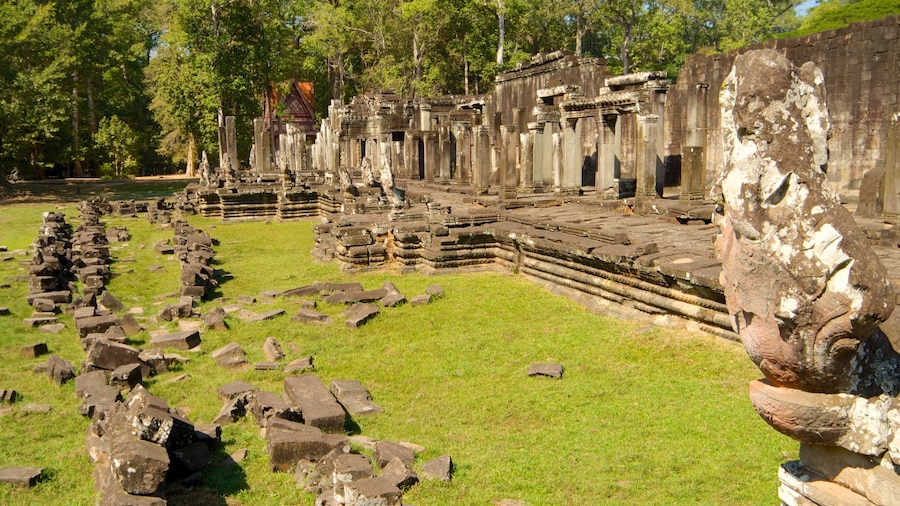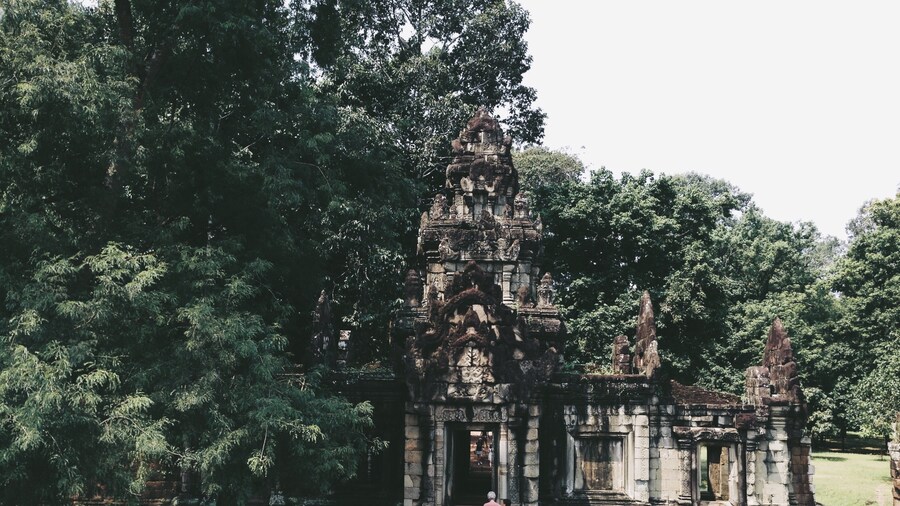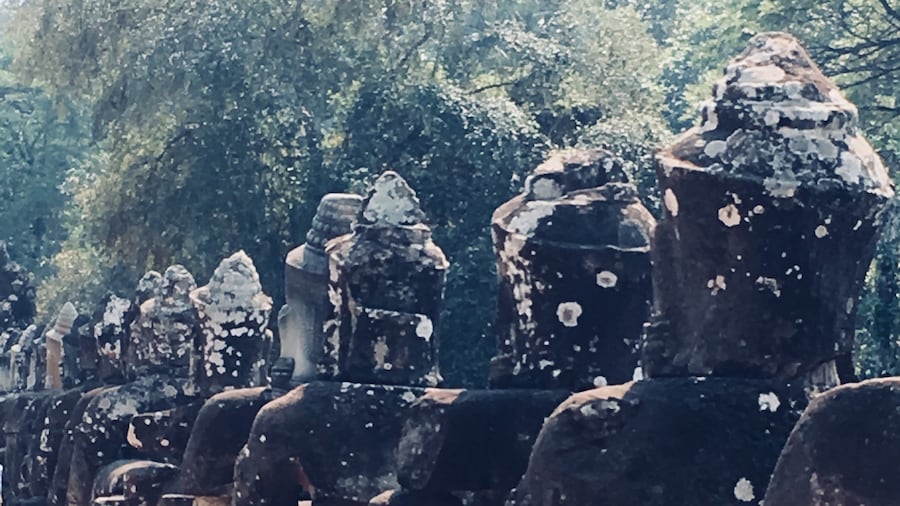Have your camera ready for the ancient spectacle that is Bayon Temple. Built in the 12th century, it was the last stone temple built during the Khmer Empire. The grand architecture and stunning details symbolise the end of an era in a brilliant fashion.
Although Bayon is one of Angkor Wat’s grandest temples, it is usually less busy than other attractions, so you can stroll around with ease.
Spend time with the “Mona Lisa of Southeast Asia”, a towering carved face wearing an enigmatic smile. This is one of Bayon’s main attractions. Another highlight is the “200 Faces of Lokesvara”, located on the upper terrace of the temple. Carved onto each side of the dozens of towers, the faces are a striking sight.
Bayon’s carvings vary throughout the sweeping architecture. Explore the intricately crafted mythological events that are etched into the inner gallery and get a taste of the Khmer Empire’s past through the historical carvings in the outer gallery.
Be sure to wear comfortable shoes and ample sunscreen. Since many parts of Bayon do not have ceilings, most exploring is done outdoors, and the sun is powerful year-round. Arrive in style aboard an elephant, which you can rent near the entrance of the park. After hours of exploring, take advantage of the food and drink stands that are located outside the temple.
Bayon is located in the centre of Angkor Wat, symbolising its position as the walled city’s intersection of heaven and earth. The drive from the park’s entrance to Siem Reap takes less than 20 minutes. Rent bicycles and make the journey at your own speed, or rent a private car or tuk-tuk to reach Bayon. Most tour guides offer reasonable rates and will give you an insider’s perspective on the ancient temple. One, three or seven-day admission passes are available at the entrance of Angkor Wat armed with this, you can explore Bayon and beyond!
